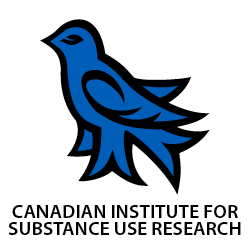Since the turn of the century, there has been a sharp decrease in the proportion of the population that resides in rural and remote British Columbia (BC) communities. In 2011, 86% of British Columbians (3,790,694) lived in urban areas, whereas only 14% of the population, or 609,363 persons, resided in rural communities. Although a much smaller proportion of the population lives in rural areas, these communities have disproportionately higher rates of alcohol consumption and alcohol-related hospitalizations than urban areas of BC, such as Vancouver and Richmond. These higher rates of alcohol-related harms, when combined with poor access to health care, can result in greater disease severity and increased rates of alcohol-related deaths. Although these challenges have existed for many decades, we still have an incomplete understanding of the barriers to obtaining addictions treatment services, which is important information that could be used to inform health care policy and resource allocation decisions throughout the province.
For the past two years, I have worked with my former PhD Supervisor, Dr. Scott Macdonald, to address this lack of knowledge by examining access and use of primary health care services by persons with alcohol-attributed diseases in rural BC. I focused on primary health care physicians because they are the most accessible type of health care provider available in rural and remote communities that often do not have hospital-based substance use treatment services. Family doctors are ‘gatekeepers’ to specialist services, and have a significant role to play in the identification and treatment of alcohol-attributed diseases early in their development.
For these projects, I studied both geographic (spatial) variations in primary health care use, as well as place-based physician experiences treating persons in rural communities. In the first project, I used physician-billing data to model use of general practitioner services by persons with alcohol-attributed diseases from 2001-2011 with administrative health data provided by Population Data BC. We were surprised to learn that from 2001-2011, cases of alcohol-attributed diseases in primary health care practices grew significantly (53.3%), from 14,882 cases in 2001 to 22,823 cases in 2011.1 We also found geographic inequities in alcohol-attributed disease cases among primary health care populations by Health Service Delivery Area (HSDA). Rural areas generally had much higher rates of alcohol-attributed disease cases than highly populated areas of the province. For example, in the Northwest HSDA (which includes Smithers, Prince Rupert, and Kitimat) cases rose 77.2% from 57.1 per 10,000 in 2001 to 101.3 per 10,000 in 2011. The 2011 rate of alcohol-attributed disease cases per 10,000 in the Northwest HSDA was the highest in the province – almost double the provincial average of 48.2 cases per 10,000. In comparison, several urban areas such as Vancouver, Richmond, and Fraser North had no significant increases in alcohol-attributed disease cases during this same period.
In the second study, I distributed a mail and online survey to general practitioners in rural areas that were defined using the Rural Coordination Centre of BC’s system for defining rural communities. We received responses from 22% of participants (for a total of 67 completed surveys) who overwhelming reported that they experienced significant challenges in referring their patients to treatment in urban areas. Physicians cited long waitlists and a lack of residential treatment facilities and inpatient services as the main challenges to referring patients. In many of the surveys, physicians wrote about personal experiences working in their community, and the challenges associated with delivering appropriate health care in isolated communities. They also stated that travel costs, distance to treatment facilities, and responsibilities in their hometowns prevented patients from obtaining required services only available in other communities. Even when services were acquired outside of the community, many physicians reported difficulties upon returning home and; as one physician summarized: “relapse on return [to community] from treatment is the rule rather than exception. We want local treatment [Family Physician, #038].”2
The outcomes of our research suggest that an increasing number of British Columbians are presenting with alcohol-attributed diseases to general practitioners, and there are large geographic inequities in the incidence of alcohol-attributed diseases in primary health care patients. We also found that rural family doctors frequently experience significant challenges when referring patients to treatment. Addressing these challenges requires that we work with residents and health professionals in rural places to develop innovative – and cost effective – methods for enhancing the continuum of services provided to rural residents. In this study, several physicians suggested having a centralized referral phone number for substance use treatment services in urban Vancouver, Victoria, and Nanaimo, which would not require a large public sector investment. Additional participatory research, and accompanying policy development processes, is required to articulate and implement these suggestions for service improvement in rural areas where populations disproportionately experience alcohol-related harms and related diseases.
NOTES
1 Slaunwhite, AK., Macdonald, S. (2015). Primary health care utilization for alcohol-attributed diseases in British Columbia, Canada 2001-2011. BMC Family Practice. (in press).
2 Slaunwhite, AK., Macdonald, S. (2015). Alcohol, Isolation, and Access to Treatment: Family Physician Experiences of Alcohol Consumption and Access to Health Care in Rural British Columbia. Journal of Rural Health. (in press).
Author: Amanda K Slaunwhite, Collaborating Scientist, Centre for Addictions Research of BC; Post-Doctoral Fellow, University of New Brunswick.
*Please note that the material presented here does not necessarily imply endorsement or agreement by individuals at the Centre for Addictions Research of BC



